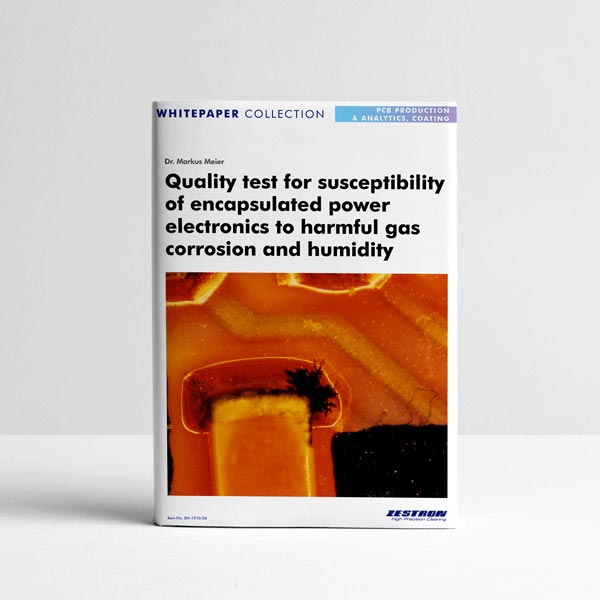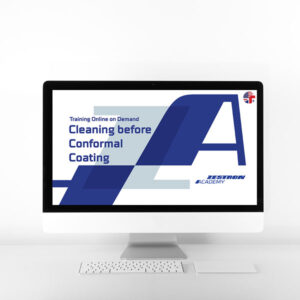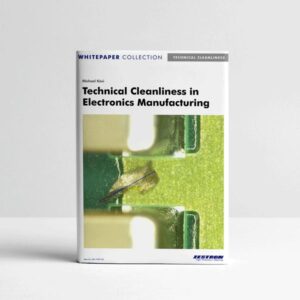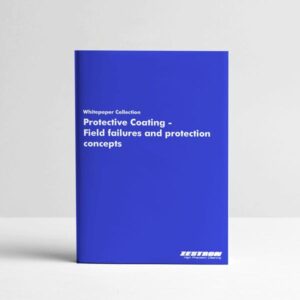Description
[10/2019]
Cracks, but also penetration weak points in molds and pottings of low voltage electronics and power electronic devices result in a drastic shortening of the service life or, in most cases, the immediate failure of the entire circuit. Particularly, in the case of ambient air with a high content of harmful gases or humidity, faulty spots in molds and pottings must be viewed very critically, as this enables direct access of the corrosive gases and humidity to the susceptible metal pieces of the components and circuits (DCB and chip surfaces, solder/sinter connections, …).
In order to test the reliability of electronic components and circuits and thus the tightness of the mentioned protective systems against corrosive gases, harmful gas tests with different gases or gas mixtures such as sulphur dioxide, hydrogen sulphide, nitrogen oxides or chlorine are currently being carried out.


 Dr. Markus Meier
Senior Technology Analyst, ZESTRON EUROPE
Dr. Markus Meier
Senior Technology Analyst, ZESTRON EUROPE




